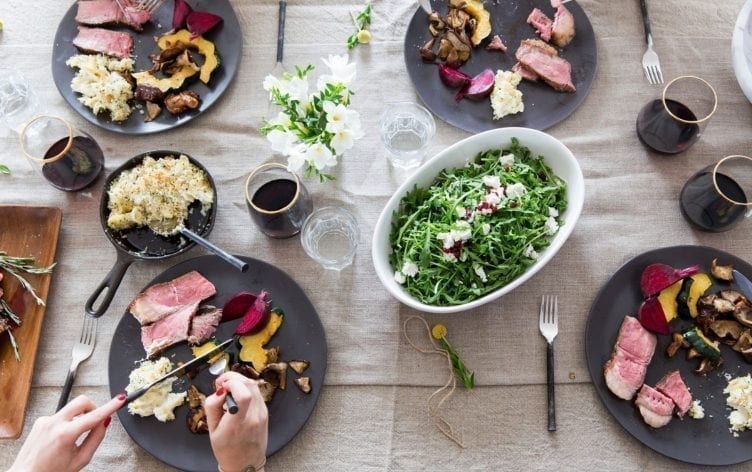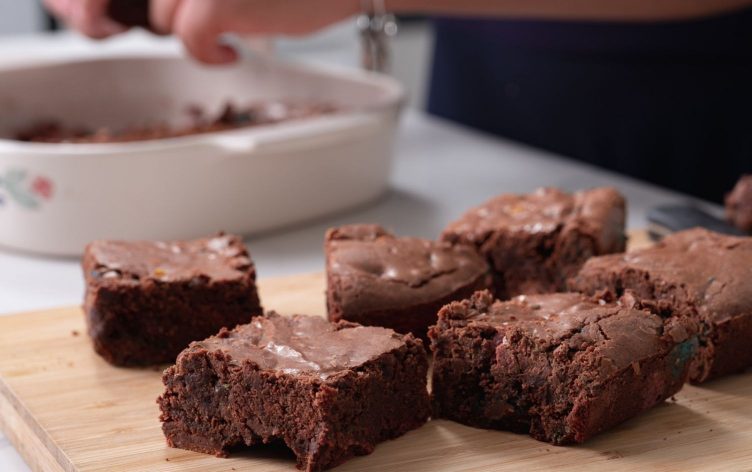A sudden overwhelming desire for chocolate or a bag of chips — cravings can pop up out of nowhere and be detrimental to weight loss. However, there are both physiological and psychological reasons behind them. The good news is there are plenty of ways to manage cravings.
Keep on track and reach your wellness goals with these five tips for minimizing cravings:
FOLLOW A MEAL PLAN
Well-balanced meals rich in fiber, high-quality protein and healthy fats are more likely to keep you satisfied, meaning you’ll be less likely to reach for an unhealthy snack. That’s why meal planning is a great tool. Knowing what you’re going to eat ahead of time can also reduce stress, which is an important factor in weight loss.
INCREASE PROTEIN AND FAT
Protein requires more work for the body to digest, leaving you feeling full longer. Moreover, since protein and fat slow the absorption of sugar during a meal, eating foods rich in both macronutrients can stabilize blood sugar and moderate cravings. Try incorporating more foods like salmon, tuna, eggs, nuts and full-fat Greek yogurt into your diet.
googletag.cmd.push(function() {
googletag.display(“ad-tag-300×250-post-m2”);
});
UP YOUR FIBER INTAKE
Dietary fiber slows the rate at which food enters your bloodstream and increases the speed at which food exits your body. This process keeps your blood sugar levels in check, reduces your appetite and creates a sense of fullness for a longer period of time.
Fiber is present in most plant-based foods such as whole grains, beans, fruits, vegetables, nuts and seeds. Here are a few simple ways to increase fiber consumption:
- Try bulking up on veggies (especially the cruciferous ones).
- Add a tablespoon or two of ground flax or chia seeds to meals and snacks.
- Opt for high-fiber fruit like raspberries, blackberries, apples and pears daily.
PRACTICE MINDFULNESS
Giving into cravings has a tendency to be viewed as negative, but it’s not always the main the issue. Rather, an important question to ask yourself is how are you enjoying the foods you crave? Taking the time to plate your food, sit down at the table and savor each bite can help prevent overeating. If you want to learn more about eating intuitively, this simple tool can help with cravings.
HAVE A SMART KITCHEN SETUP
Being strategic with how you organize your kitchen can make a big impact on eating patterns. If you purchase foods as occasional treats, place them in opaque containers on the highest shelf in your pantry or cabinets so they’re out of eyesight. Conversely, keep healthy foods like fresh fruit and veggies on easy-to-reach shelves in your fridge or on your counter. That way, you’ll be more likely to reach for them first.
Originally published March 2019
Ready to take the next step? Unlock MyFitnessPal Premium to access custom goal settings, quick-log recipes, and guided plans from a registered dietitian. Premium users are 65% more likely to reach their weight loss goals!
A sudden overwhelming desire for chocolate or a bag of chips — cravings can pop up out of nowhere and be detrimental to weight loss. However, there are both physiological and psychological reasons behind them. The good news is there are plenty of ways to manage cravings.
Keep on track and reach your wellness goals with these five tips for minimizing cravings:
FOLLOW A MEAL PLAN
Well-balanced meals rich in fiber, high-quality protein and healthy fats are more likely to keep you satisfied, meaning you’ll be less likely to reach for an unhealthy snack. That’s why meal planning is a great tool. Knowing what you’re going to eat ahead of time can also reduce stress, which is an important factor in weight loss.
INCREASE PROTEIN AND FAT
Protein requires more work for the body to digest, leaving you feeling full longer. Moreover, since protein and fat slow the absorption of sugar during a meal, eating foods rich in both macronutrients can stabilize blood sugar and moderate cravings. Try incorporating more foods like salmon, tuna, eggs, nuts and full-fat Greek yogurt into your diet.
googletag.cmd.push(function() {
googletag.display(“ad-tag-300×250-post-m2”);
});
UP YOUR FIBER INTAKE
Dietary fiber slows the rate at which food enters your bloodstream and increases the speed at which food exits your body. This process keeps your blood sugar levels in check, reduces your appetite and creates a sense of fullness for a longer period of time.
Fiber is present in most plant-based foods such as whole grains, beans, fruits, vegetables, nuts and seeds. Here are a few simple ways to increase fiber consumption:
- Try bulking up on veggies (especially the cruciferous ones).
- Add a tablespoon or two of ground flax or chia seeds to meals and snacks.
- Opt for high-fiber fruit like raspberries, blackberries, apples and pears daily.
PRACTICE MINDFULNESS
Giving into cravings has a tendency to be viewed as negative, but it’s not always the main the issue. Rather, an important question to ask yourself is how are you enjoying the foods you crave? Taking the time to plate your food, sit down at the table and savor each bite can help prevent overeating. If you want to learn more about eating intuitively, this simple tool can help with cravings.
HAVE A SMART KITCHEN SETUP
Being strategic with how you organize your kitchen can make a big impact on eating patterns. If you purchase foods as occasional treats, place them in opaque containers on the highest shelf in your pantry or cabinets so they’re out of eyesight. Conversely, keep healthy foods like fresh fruit and veggies on easy-to-reach shelves in your fridge or on your counter. That way, you’ll be more likely to reach for them first.
Originally published March 2019
Ready to take the next step? Unlock MyFitnessPal Premium to access custom goal settings, quick-log recipes, and guided plans from a registered dietitian. Premium users are 65% more likely to reach their weight loss goals!











